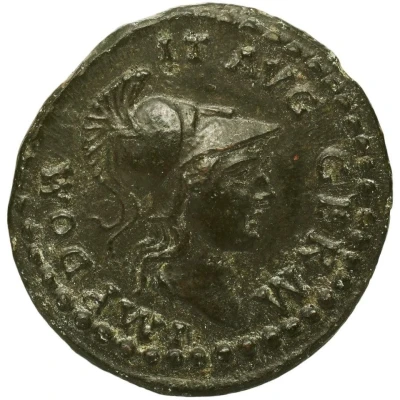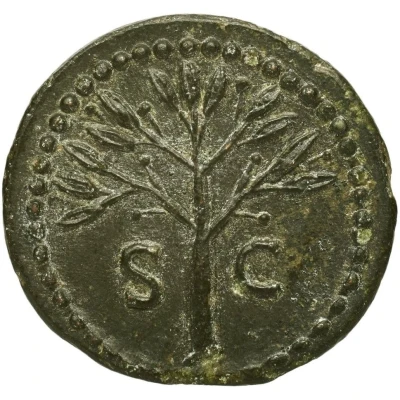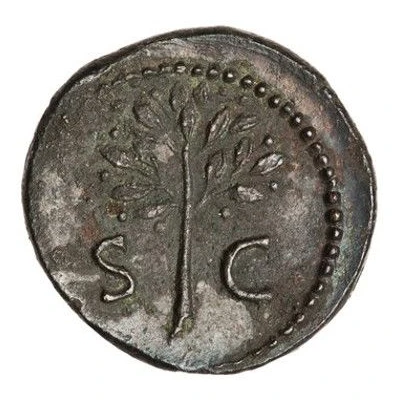


© Bibliothèque nationale de France / Gallica
Quadrans S C; Minerva
| Bronze | 2.9 g | 17.5 mm |
| Issuer | Rome › Roman Empire (27 BC - 395 AD) |
|---|---|
| Emperor | Domitian (Titus Flavius Domitianus) (81-96) |
| Type | Standard circulation coin |
| Years | 84-85 |
| Value | 1 Quadrans = ¼ As = 1⁄64 Denarius |
| Currency | Denarius, Reform of Augustus (27 BC – AD 215) |
| Composition | Bronze |
| Weight | 2.9 g |
| Diameter | 17.5 mm |
| Shape | Round (irregular) |
| Technique | Hammered |
| Demonetized | Yes |
| Updated | 2024-10-06 |
| Numista | N#251670 |
|---|---|
| Rarity index | 100% |
Reverse
Olive branch upright.
Script: Latin
Lettering: S C
Translation:
Senatus Consultum.
Decree of the senate.
Comment
Mass varies: 1.64–3.81 g;Diameter varies: 17–18 mm;
Source: Online Coins of the Roman Empire (OCRE)
Interesting fact
The Quadrans coin was used during the Roman Empire and was equivalent to one-fourth of a denarius, which was the standard unit of currency at the time. The Quadrans coin features an image of the goddess Minerva on one side and an image of a shield and spear on the other. It was made of bronze and weighed 2.9 grams. It's interesting to note that the Quadrans coin was used during a time of significant economic change in the Roman Empire. The empire was expanding rapidly, and trade and commerce were becoming increasingly important. The Quadrans coin was likely used in everyday transactions, and its small size and bronze composition made it accessible to people of all social classes. Overall, the Quadrans coin is a fascinating piece of history that provides insight into the economic and social dynamics of the Roman Empire during its time.

